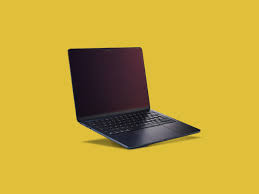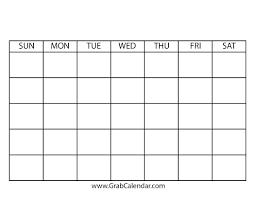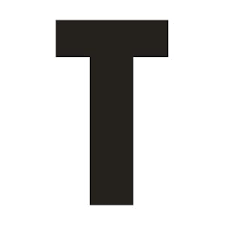INFORMATION FOR 2014-15 SEASON
The upcoming basketball season will include four major rule changes. In brief, the following will now be in effect:
The details of the changes are:
- Players in marked lane spaces will be able to move into the lane when the ball is released by the free-throw shooter;
- As long as they meet color and logo requirements, all sleeves and tights are permissible;
- The definition of an intentional foul was expanded, and;
- The new 10-6-12 rule was added to clarify and specify the exact types of contact that constitute “hand-checking” on the perimeter.
The details of the changes are:
3-5-3 Art. 3: Arm sleeves, knee sleeves, lower leg sleeves and tights are permissible:
a. Anything worn on the arm and/or leg is a sleeve, except a knee brace, and shall meet the color restrictions.
b. The sleeves/tights shall be black, white, beige or the predominant color of the uniform and the same color sleeves/tights shall be worn by teammates.
c. All sleeves/tights shall be the same solid color.
d. Meet the logo requirements in 3-6.
Note: In general, a brace is defined as anything that contains hinges and/or straps or an opening over the knee cap.
Rationale: To clarify the rule and give better guidance to what is acceptable.
4-19-3d d. Excessive contact with an opponent while the ball is live or until an airborne shooter returns to the floor.
Rationale: This change expands the definition of an intentional foul to include excessive contact committed by all players including players in control to more clearly address the contact with the elbow(s) issue, not just those playing the ball. The expansion of the definition provides a more clear definition of an intentional foul reducing the subjectivity in making rulings on this type of play.
a. Anything worn on the arm and/or leg is a sleeve, except a knee brace, and shall meet the color restrictions.
b. The sleeves/tights shall be black, white, beige or the predominant color of the uniform and the same color sleeves/tights shall be worn by teammates.
c. All sleeves/tights shall be the same solid color.
d. Meet the logo requirements in 3-6.
Note: In general, a brace is defined as anything that contains hinges and/or straps or an opening over the knee cap.
Rationale: To clarify the rule and give better guidance to what is acceptable.
4-19-3d d. Excessive contact with an opponent while the ball is live or until an airborne shooter returns to the floor.
Rationale: This change expands the definition of an intentional foul to include excessive contact committed by all players including players in control to more clearly address the contact with the elbow(s) issue, not just those playing the ball. The expansion of the definition provides a more clear definition of an intentional foul reducing the subjectivity in making rulings on this type of play.
9-1-4g g. A player occupying a marked lane space may not have either foot beyond the vertical plane of the outside edge of any lane boundary, or beyond the vertical plane of any edge of the space (2 inches by 36 inches) designated by a lane-space mark or beyond the vertical plane of any edge of the space (12 inches by 36 inches) designated by a neutral zone. A player shall position one foot near the outer edge of the free-throw lane line. The other foot may be positioned anywhere within the designated 36-inch lane space until the ball has been released.
Rationale: The current rule “until the ball touches the ring or backboard” creates two obstacles for officials. (1) Attempting to watch the ball strike the ring or backboard while simultaneously attempting to observe if any players/free thrower violate the lane line restrictions. (2) Insufficient time for the perimeter official(s) to step down in an effort to obtain optimum angles on the players involved in rebounding a missed try. This change proposal would provide the opportunity to effectively eliminate both obstacles. In recent years we have moved players along the lane spaces up, and removed excess players along the lane lines, so the rationale for changing this rule to its current status is no longer an issue.
10-6-12 New The following acts constitute a foul when committed against a ball handler/dribbler:
a. Placing two hands on the player.
b. Placing an extended arm bar on the player.
c. Placing and keeping a hand on the player.
d. Contacting the player more than once with the same hand or alternating hands.
Rationale: Rather than continuing to make hand-checking a point of emphasis year after year, simply add a brand new rule that requires a personal foul be called any time this type of contact occurs on a player holding or dribbling the ball outside of the lane area. The NFHS game needs this type of illegal contact on the perimeter ball handlers and dribblers eliminated.
Rationale: The current rule “until the ball touches the ring or backboard” creates two obstacles for officials. (1) Attempting to watch the ball strike the ring or backboard while simultaneously attempting to observe if any players/free thrower violate the lane line restrictions. (2) Insufficient time for the perimeter official(s) to step down in an effort to obtain optimum angles on the players involved in rebounding a missed try. This change proposal would provide the opportunity to effectively eliminate both obstacles. In recent years we have moved players along the lane spaces up, and removed excess players along the lane lines, so the rationale for changing this rule to its current status is no longer an issue.
10-6-12 New The following acts constitute a foul when committed against a ball handler/dribbler:
a. Placing two hands on the player.
b. Placing an extended arm bar on the player.
c. Placing and keeping a hand on the player.
d. Contacting the player more than once with the same hand or alternating hands.
Rationale: Rather than continuing to make hand-checking a point of emphasis year after year, simply add a brand new rule that requires a personal foul be called any time this type of contact occurs on a player holding or dribbling the ball outside of the lane area. The NFHS game needs this type of illegal contact on the perimeter ball handlers and dribblers eliminated.






